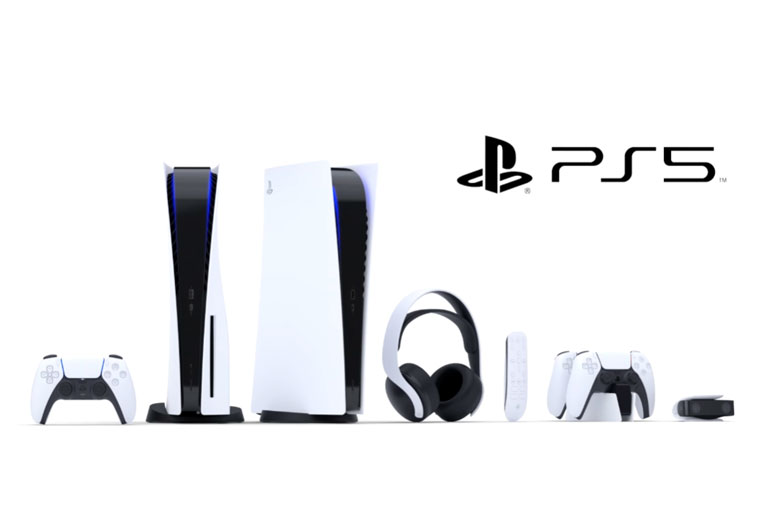Xiaomi Mi 10 vs Mi 10 Pro - What’s the difference - Android
The Xiaomi Mi 10 series have finally reached more markets, including Philippines, since their release way back in February. Being their first flagship releases for 2020, both the Xiaomi Mi 10 and Mi 10 Pro boasts a couple of high-end specs that you expect from a flagship smartphone. They both come with Snapdragon 865 processors, […] More
This article, Xiaomi Mi 10 vs Mi 10 Pro: What’s the difference?, was originally published at NoypiGeeks | Philippines Technology News, Reviews and How to's.
The Xiaomi Mi 10 series have finally reached more markets, including Philippines, since their release way back in February.
Being their first flagship releases for 2020, both the Xiaomi Mi 10 and Mi 10 Pro boasts a couple of high-end specs that you expect from a flagship smartphone. They both come with Snapdragon 865 processors, 90Hz displays, 108-megapixel main camera, fast charging, and what more.

So the question is, that are the difference between the two? We’ll answer that question in our Xiaomi Mi 10 versus Mi 10 Pro specifications and features comparison.
| Xiaomi Mi 10 | Xiaomi Mi 10 Pro | |
| Operating System | Android 10 MIUI 11 | Android 10 MIUI 11 |
| SIM | Dual SIM Dual Standby | Dual SIM Dual Standby |
| Display | 6.67-inch FHD+ AMOLED 2340 x 1080 pixel resolution ~386ppi HDR10+ 90Hz refresh rate 180Hz sampling rate 1200-nit brightness Corning Gorilla Glass 5 TUV Rheinland low blue-light certification | 6.67-inch FHD+ AMOLED 2340 x 1080 pixel resolution ~386ppi HDR10+ 90Hz refresh rate 180Hz sampling rate 1200-nit brightness Corning Gorilla Glass 5 TUV Rheinland low blue-light certification |
| Processor | 2.84GHz Qualcomm Snapdragon 865 5G octa-core Liquid Cooling | 2.84GHz Qualcomm Snapdragon 865 5G octa-core Liquid Cooling |
| GPU | Adreno 650 | Adreno 650 |
| RAM | 8GB LPDDR5 | 8GB LPDDR5 |
| Storage | 128GB/256GB UFS 3.0 non-expandable | 256GB UFS 3.0 non-expandable |
| Front Camera | 20-megapixel f/2.0 120fps slow-mo selfie | 20-megapixel f/2.0 120fps slow-mo selfie |
| Rear Camera | 108-megapixel primary (f/1.7, OIS) 13-megapixel (ultra-wide f/2.2) 2-megapixel (macro) 2-megapixel (depth sensor) 8K video recording 120fps slow-mo PDAF OIS LED flash | 108-megapixel primary (f/1.7, OIS) 20-megapixel (ultra-wide f/2.2) 8-megapixel (10x hybrid zoom, OIS, f/2.0) 12-megapixel (Portrait lens, 2x optical zoom) 50x digital zoom 8K video recording PDAF 960fps slow-mo LED flash |
| Audio | Stereo speakers Hi-Res audio No headphone jack | Stereo speakers Hi-Res audio No headphone jack |
| Security | In-display fingerprint scanner Face unlock | In-display fingerprint scanner Face unlock |
| Connectivity | HSPA+, 4G LTE 5G WiFi 6, dual-band Bluetooth 5.1 Dual-band, GPS, A-GPS, GLONASS IR blaster NFC USB Type-C | HSPA+, 4G LTE 5G WiFi 6, dual-band Bluetooth 5.1 Dual-band, GPS, A-GPS, GLONASS IR blaster NFC USB Type-C |
| Others | 10W Reverse Wireless Charging | 10W Reverse Wireless Charging |
| Dimensions | 162.6 x 74.8 x 8.96 mm | 162.6 x 74.8 x 8.96mm |
| Weight | 208g | 208g |
| Colors | Coral Green Twilight Grey | Alpha White Solstice Grey |
| Battery | 4,780mAh 30W wired fast charging 30W wireless fast charging | 4,500mAh 50W wired fast charging 30W wireless fast charging 65W charger included |
| Price | 8GB/128GB: Php34,590 8GB/256GB: Php36,990 | Php45,990 |
Design
It would be really hard to tell these two devices apart. As you can see, they share the same key features, which reflects on their looks.
 Xiaomi Mi 10
Xiaomi Mi 10For one, they both come with curved 6.67-inch Super AMOLED screens, with a punch-hole on the top left for the selfie camera. We also have the same camera design on the back. In fact, they even have the same exact dimensions and weight.
Thankfully, Xiaomi decided to offer them in different colors. The Mi 10 has a vibrant Coral Green and Twilight Grey options, while the Mi 10 Pro is available in Alpha White and Solstice Grey.
 Xiaomi Mi 10 Pro
Xiaomi Mi 10 ProThese flagship devices are sandwiched with Corning Gorilla Glass 5 with an all-metal body. On the downside, they both lack an IP rating for water and dust protection.
Display
The Xiaomi Mi 10 and Mi 10 Pro still share the same exact display. Still no difference here.

They both share a flagship-level 6.67-inch FHD+ AMOLED screen. It would be nice for the Pro model to gain a QHD screen, just to separate it from the vanilla model, but that may increase the price.
Both devices also have a smooth 90Hz refresh rate that’s found on other flagships like the Huawei P40 Pro. What’s more, it has a 180Hz sampling rate for increased responsiveness. The screen brightness also peaks at 1200-nit, perfect for HDR10+ content.
Processor
Other than the design and display, the Xiaomi Mi 10 series also shares the same processor. This is actually good since the Snapdragon 865 processor is hailed as the most powerful chipset in the market today, and we’re seeing it on both devices.

Both smartphones also have Liquid Cooling technology to keep the temps down after extensive gaming, so it runs at its best every time.
However, it would be nice to see a 12GB RAM model be made available in the Philippines. Also, a lot of power users and file hoarders might be disappointed with the lack of a microSD card slot for storage expansion.
Camera
We’ll finally see the main difference between the two. As you can see, the Xiaomi Mi 10 Pro gets to have an 8-megapixel telephoto lens that can do 10x of hybrid zoom and has optical image stabilization. We also have a 12-megapixel lens with a 2x zoom, great for portrait shots. Lastly, a sharper 20-megapixel ultra-wide camera.

On the other hand, the Xiaomi Mi 10 settles for a 13-megapixel ultra-wide camera, and the boring 2-megapixel macro and 2-megapixel depth sensors. It also lacks the 50x digital zoom and 960fps slow-motion that the Mi 10 Pro has.
But if you’re not too experimental in photography, go with the cheaper model as both the Mi 10 and Mi 10 Pro shares the same 108-megapixel main camera, with a bright f/1.7 aperture and OIS.
Related
- Xiaomi Mi 10 vs Samsung Galaxy S20: Specs Comparison
- Xiaomi Mi 10 Pro vs Samsung Galaxy S20 Ultra: Specs Comparison
Battery
The Xiaomi Mi 10 has a 4,780mAh battery while the Pro model, oddly enough, has a smaller 4,500mAh capacity. However, the latter has a faster 50W fast charging support, with a 65W charger included that you can use on your laptop and other devices. The Mi 10 only has 30W.

On the upside, both devices has a whopping 30W wireless fast charging support, but you need a wireless charger that supports it.
They also come with 10W reverse charging, which can charge a smartphone with acceptable speeds — not just for emergencies.
Others
Since they use the same processor, both the Xiaomi Mi 10 and Mi 10 Pro has 5G connectivity. Making them Xiaomi Philippines’ first 5G phones in the country. The Snapdragon 865 also brings the new Bluetooth 5.1 and WiFi 6 antennas.

Also, on-board are NFC and an IR blaster for your non-smart appliances. They also have advanced stereo speakers to complement that great display. And since it’s AMOLED, it has an in-display fingerprint scanner.
Conclusion
Instead of really compromising the Mi 10 to push the people to get the Pro model, Xiaomi kept the necessities to still make the Mi 10 a great value for the price.

The Mi 10 has the same processor, screen, design, and main camera — all for a starting price of Php34,590. If you just want a fast and reliable flagship phone, you can already settle with this one.
But if you have extra money to spend, Php10,000 to be exact, the Xiaomi Mi 10 Pro costs more at Php45,990. It gets you a faster charging support and unlocks its portrait and telephoto lens, sharper ultraiw-wide camera, and 960fps slow-mo recording. Although if you’re nearing the Php50k mark, it’s probably better to go for something from Samsung, Huawei, or OnePlus.
This article, Xiaomi Mi 10 vs Mi 10 Pro: What’s the difference?, was originally published at NoypiGeeks | Philippines Technology News, Reviews and How to's.
12/06/2020 04:17 PM
The Evolution of the PlayStation
12/06/2020 10:48 AM
Sony unveils new PlayStation 5 and PlayStation 5 Digital Edition
12/06/2020 02:32 PM
List of games coming to PlayStation 5
12/06/2020 11:46 AM
COVID-19 response app RC143 now FREE for all Globe/TM subscribers
12/06/2020 05:51 AM
COMPUTEX 2020 moved to June 2021
12/06/2020 10:08 AM
Vivo V19 Neo Review (2)
12/06/2020 04:01 PM
- HEALTH
- Comics
- Libraries & Demo
- Sports Games
- Racing
- Photography
- Transportation
- Media & Video
- Sports
- Health & Fitness
- Weather
- Medical
- Cards & Casino
- Arcade & Action
- Personalization
- Social
- Communication
- Productivity
- Casual
- Shopping
- Tools
- Brain & Puzzle
- Business
- News & Magazines
- Finance
- Lifestyle
- Music & Audio
- Entertainment
- Travel & Local
- Books & Reference
- Education






